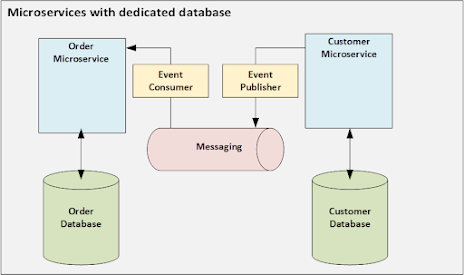Are you planning to implement Microservices in your project? Are you looking for details about what are the different Microservices patterns? If so, then you reached the place. In this article, we will understand various Microservices patterns in detail. Let's start
Introduction
Microservices architecture is a popular software development approach that emphasizes the creation of small, independent services that can work together to deliver a larger application or system. This approach has become popular due to the flexibility, scalability, and maintainability it offers. However, designing and implementing a microservices-based system can be challenging. To help address these challenges, developers have come up with various patterns for designing and implementing microservices. In this article, we'll discuss some of the most common microservices patterns.
1. Service Registry Pattern
The service registry pattern involves using a centralized registry to keep track of all available services in a system. Each service registers itself with the registry and provides metadata about its location and capabilities. This enables other services to discover and communicate with each other without having to hardcode the location of each service.
2. API Gateway Pattern
The API gateway pattern involves using a single entry point for all client requests to a system. The gateway then routes requests to the appropriate microservice based on the request type. This pattern simplifies client access to the system and provides a layer of abstraction between clients and microservices.
3. Circuit Breaker Pattern
The circuit breaker pattern involves using a component that monitors requests to a microservice and breaks the circuit if the microservice fails to respond. This prevents cascading failures and improves system resilience.
4. Event Sourcing Pattern
The event sourcing pattern involves storing all changes to a system's state as a sequence of events. This enables the system to be reconstructed at any point in time and provides a reliable audit trail of all changes to the system.
5. CQRS Pattern
The CQRS (Command Query Responsibility Segregation) pattern involves separating read and write operations in a system. This enables the system to optimize for each type of operation and improves system scalability and performance.
5. Saga Pattern
The saga pattern involves using a sequence of transactions to ensure consistency in a distributed system. Each transaction is responsible for a specific task and can be rolled back if an error occurs. This pattern is useful for long-running transactions that involve multiple microservices.
6. Bulkhead Pattern
The bulkhead pattern involves isolating microservices in separate threads or processes to prevent failures in one microservice from affecting others. This pattern improves system resilience and availability.
In conclusion, microservices patterns are essential for designing and implementing scalable, maintainable, and resilient microservices-based systems. The patterns discussed in this article are just a few of the many patterns available, but they are some of the most common and widely used. By understanding and using these patterns, developers can create microservices-based systems that are easier to develop, deploy, and maintain.
Learn more about Microservices here



No comments:
Post a Comment
Please do not enter any spam link in the comment box.